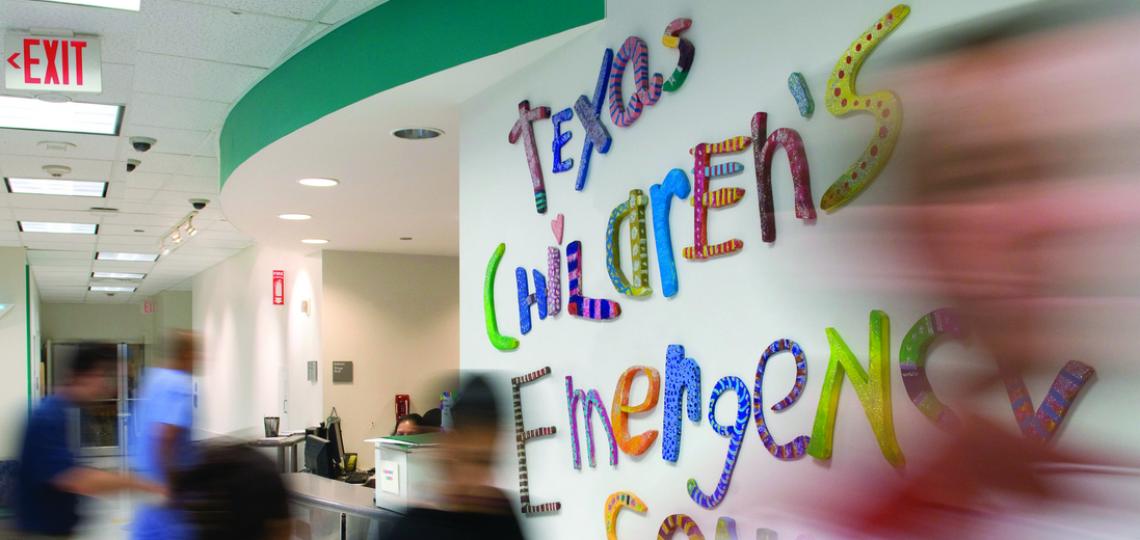
Division Overview
Baylor College of Medicine Department of Pediatrics Division of Emergency Medicine consists of over 60 Pediatric Emergency Medicine fellowship-trained physicians, five general pediatricians and 20 pediatric emergency medicine, global health, and point-of-care ultrasound fellows. In addition, over 30 physicians from the Department of Emergency Medicine at Baylor are credentialed to work at Texas Children’s to provide emergency care for patients. Collectively, over 160,000 patients in the Houston metropolitan area are seen annually across three clinical sites: Texas Children’s Hospital - Medical Center; Texas Children’s Hospital - West Campus; and Texas Children’s Hospital - The Woodlands. Texas Children’s Hospital – Austin opened in February 2024.
Division Highlights
Division of Pediatric Emergency Medicine is focused on optimizing health outcomes for all acutely ill and injured children. We excel in family-centered care, education, research and innovation, with a commitment to service and quality that enhances the health and well-being of children needing emergency care. We achieve excellence in these areas by:
- Delivering individualized, family-centered, compassionate, high-quality health care to acutely ill and injured children
- Providing world-class education and training in pediatric emergency medicine, global health, point-of-care ultrasound, quality improvement, teaching, research, simulation, child advocacy, and administration
- Advancing excellence in pediatric emergency medicine through transformational research and innovation
- Performing continuous process improvement
- Through vigilant planning and preparation, ensure continuity of operations and optimize care delivery during adverse/disaster events
- Embracing diversity and promote a supportive, collegial community within the workplace
- Engaging the workforce and support meaningful, individualized career development and satisfaction
- Fostering longitudinal development of health care leaders
Education
Our accredited pediatric emergency fellowship is one of the largest and most highly competitive programs in the country. It provides fellows the opportunity to receive extensive exposure and training in quality, medical education, research, point of care ultrasound, emergency medical services, disaster medicine, informatics, child abuse, simulation, community emergency medicine, trauma, hospital administration, customer service, and advocacy. Our PEM-Global Health Fellowship is the first accredited combined program in the nation.
Our faculty teach and mentor trainees of all levels from numerous postgraduate programs, including Baylor College of Medicine, The University of Texas and Brooke Army Medical Center.
Research
Funded research efforts include prehospital care, simulation medicine, global health, and emergency care.
BCM faculty are involved in local, regional, and national projects for prehospital care, including with the Houston Fire Department and the CHaMP prehospital node of the Pediatric Emergency Care Applied Research Network. Dr. Kathryn Kothari is the principal investigator. In addition, the Texas Emergency Medical Services for Children State Partnership has been housed at BCM for the last decade.
Many pediatric emergencies are low frequency, high risk events, resulting in scenarios that are well suited to simulation medicine. Dr. Cara Doughty, the head of the Texas Children’s Hospital Simulation Center, Dr. Daniel Lemke, and Dr. Bram Welch-Horan are nationally and internationally recognized experts in simulation medicine.
Led by Drs. Heather Crouse and Marideth Rus, the PEM division has a long-standing history of involvement with global health clinical care and research at several Baylor International Pediatric AIDS Initiative sites in sub-Saharan Africa, as well as work in Latin America. Sustainable, bidirectional care has been implemented at a number of sites to improve the emergency are of ill and injured children.
PEM faculty are involved in two of the seven nodes within the Pediatric Emergency Care Applied Research Network. Recent projects have included optimal treatment of benzodiazepine-refractory status epilepticus, optimal rate of fluid administration for the reversal of diabetic ketoacidosis, tools to identify adolescents with suicidal ideation and at risk for substance use and abuse, and the creation clinical decision rules to identify febrile neonates at low risk for bacteremia and meningitis. Current studies involve creation of decision rules to identify children with cervical spine injuries (to guide imaging studies), headaches (to identify factors associated with emergent intracranial findings on neuroimaging), pulmonary embolism, and sexually-transmitted infections using patient-reported risk factors. In addition, we are evaluating optimal fluid resuscitation in children with suspected sepsis. In addition, PEM faculty are heavily involved in the Pediatric Emergency Medicine Collaborative Research Committee of the American Academy of Pediatrics’ Division on Emergency Medicine and in the Pediatric Emergency Research Network, a global network of networks.
Leadership
Many faculty possess or are pursuing advanced certifications and degrees in business, education, clinical research, public health, simulation and quality.
Several PEM faculty hold critical leadership positions or roles within state and national organizations including the Governor’s EMS and Trauma Advisory Council, Children's Hospital Association, American Academy of Pediatrics, American Red Cross and American Board of Pediatrics.








